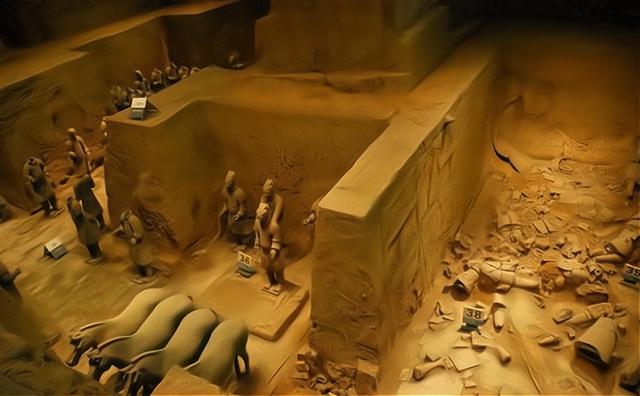
Has the Qin Shi Huang Tomb Been Excavated?
The Current State of Excavation
The tomb of Qin Shi Huang, China's first emperor, remains a subject of intense fascination and speculation. While the surrounding necropolis has yielded incredible archaeological treasures, the main tomb itself rests undisturbed beneath its earthen mound.
Current archaeological efforts are deliberately focused on the vast necropolis surrounding the tomb, rather than the tomb itself. This approach stems from a combination of factors:
- Respect for the deceased: Traditional Chinese beliefs emphasize respect for the deceased and their resting places. Disturbing an emperor's tomb is a sensitive issue.
- Technological limitations: Excavating the tomb safely and effectively presents considerable technical challenges. The sheer scale of the tomb, the potential for environmental damage, and the need to preserve delicate artifacts necessitate advanced technologies and meticulous planning.
- Ethical considerations: The potential impact of excavation on the historical and cultural significance of the tomb must be carefully considered. Preserving the integrity of the site for future generations is paramount.
The Terracotta Army and Other Discoveries
While the main tomb remains unopened, the surrounding necropolis has revealed astounding archaeological treasures, providing invaluable insights into the Qin dynasty.
The Terracotta Army: A Glimpse into Military Might
The most famous discovery is undoubtedly the Terracotta Army, located about 1.5 kilometers east of the tomb mound. This vast underground army, consisting of thousands of life-sized terracotta soldiers, horses, and chariots, was meant to guard the emperor in the afterlife. Each figure is intricately detailed and unique, showcasing the incredible craftsmanship of the Qin dynasty.
Excavation of the Terracotta Army pits began in the 1970s and is still ongoing. New pits and figures continue to be discovered, revealing the sheer scale and complexity of this ancient marvel.
Beyond the Warriors: Unveiling a City of the Dead
The necropolis extends far beyond the Terracotta Army. Archaeologists have unearthed numerous pits containing bronze chariots and horses, acrobats, musicians, and officials, all intended to serve the emperor in the afterlife. These discoveries paint a vivid picture of the opulence and grandeur of the Qin court and provide invaluable information about daily life during the period.
The Future of Qin Shi Huang's Tomb
The question of whether or not to excavate the tomb of Qin Shi Huang is a complex one with no easy answers.
The Chinese government has adopted a cautious approach, prioritizing the preservation of this invaluable historical site over immediate excavation. Continued research, technological advancements, and evolving ethical considerations will shape the future of archaeological exploration at this awe-inspiring site.
Q&A
Q: Why hasn't the tomb of Qin Shi Huang been excavated? A: The decision to not excavate is driven by a combination of respect for the deceased, significant technological challenges in safely excavating the site, and the ethical considerations of potentially disturbing an artifact of such immense historical importance.
Q: What have archaeologists found near the tomb? A: The area surrounding the tomb, known as the necropolis, has yielded incredible discoveries, including the world-famous Terracotta Army, bronze chariots, and various figures representing different aspects of court life.
Q: When will the tomb be excavated? A: There is no set timeline for excavating the tomb. The focus remains on studying the already excavated portions of the necropolis, developing new technologies for safe excavation, and ensuring the preservation of this historical treasure for future generations.